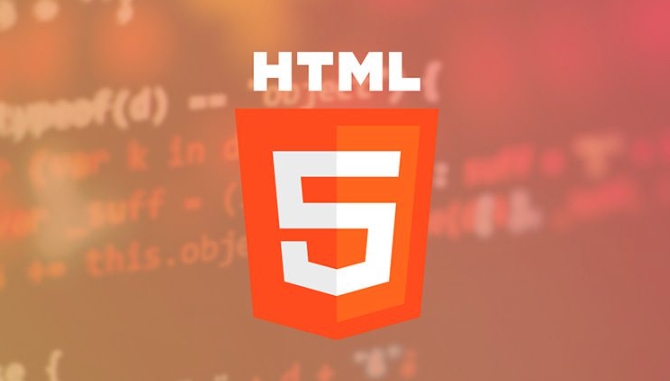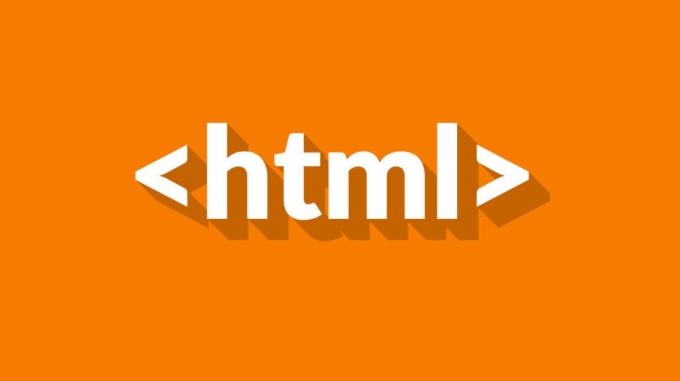Exploring Different Input Types for HTML Forms
Jul 06, 2025 am 01:57 AMThe input type improves form experience and verification efficiency. HTML5 provides a variety of input types such as text, password, and email, which are adapted to different scenarios such as username, password hiding, and email verification; supports number limited number input, date selection, checkbox multiple selection, radio single selection, file upload, range slider bar, and color color selection; combines required, min/max, and pattern to achieve front-end verification to reduce the burden on the back-end; the mobile terminal automatically adapts to keyboard types such as email display @ symbols, tel calls the numeric keyboard; provides input-able option list, readonly lock fields, and hidden information to optimize the interactive process through datalist.

In web development, HTML forms are an important way for users to interact with websites. The input types in the form determine what the user can enter, how the browser verifies, and how the interface is presented. Reasonable selection of input type can not only improve the user experience, but also reduce the burden of back-end verification.

Common input types and their uses
HTML5 introduces many input types, and in addition to traditional text and password , there are more semantics and more powerful options. The following are some commonly used input types and their applicable scenarios:

- text : used for general text input, such as username.
- password : The input content will be hidden, suitable for password input.
- email : The browser will automatically verify that it is in a legal email format.
- number : Restricts only numbers to enter, and supports up and down arrows to adjust the value.
- date : A date selector pops up, making it convenient for users to select dates.
- checkbox : Multiple choices of scenarios, such as hobbies.
- radio : Single-choice scenarios, such as gender selection.
- file : Allows users to upload files.
- range : Sliding bar, suitable for scenes such as volume or brightness settings.
- color : color selector, suitable for theme or color matching settings.
Selecting the appropriate input type according to actual needs can improve the usability and functionality of the form.
Simplify development process with HTML5 verification
Modern browsers have built-in verification mechanisms based on input type, such as:

- When entering the
emailtype, if the format is incorrect, the browser will prompt an error. - After setting the
requiredproperty, the user must fill in this field to submit. - For the
numbertype, the input range can be limited byminandmax.
These verification mechanisms can achieve basic form verification without JavaScript, saving development time. But it should be noted that front-end verification cannot replace back-end verification, and all data still needs to be checked again on the server side.
Optimized experience on mobile devices
Different input types trigger different keyboard types on mobile devices, which is very helpful for the user experience. For example:
-
emailwill display the keyboard with the @ symbol. -
telwill display a numeric keypad, suitable for phone number input. -
urldisplays the .com or / key to facilitate input of the URL.
Using these types allows users to complete form filling more efficiently, especially on mobile devices, this optimization effect is particularly obvious.
Tips for customizing input behavior
While the standard input type already meets most needs, in some cases you may need some extra control:
- If you want the user to only select from the preset options and enter a new value, you can use it in combination with
<input>and<datalist></datalist>. - For complex verification logic, you can add
patternattribute on input and verify with regular expressions. - To prevent users from modifying a certain field, you can use
readonly; if you don't want the user to see it at all, usehidden.
These tips can enable more flexible form interaction without introducing complex code.
Basically that's it. Mastering the use of input types can make form development easier and make the user's filling process smoother.
The above is the detailed content of Exploring Different Input Types for HTML Forms. For more information, please follow other related articles on the PHP Chinese website!

Hot AI Tools

Undress AI Tool
Undress images for free

Undresser.AI Undress
AI-powered app for creating realistic nude photos

AI Clothes Remover
Online AI tool for removing clothes from photos.

Clothoff.io
AI clothes remover

Video Face Swap
Swap faces in any video effortlessly with our completely free AI face swap tool!

Hot Article

Hot Tools

Notepad++7.3.1
Easy-to-use and free code editor

SublimeText3 Chinese version
Chinese version, very easy to use

Zend Studio 13.0.1
Powerful PHP integrated development environment

Dreamweaver CS6
Visual web development tools

SublimeText3 Mac version
God-level code editing software (SublimeText3)
 How to get HTML form data as text and send to html2pdf?
Sep 06, 2023 pm 12:21 PM
How to get HTML form data as text and send to html2pdf?
Sep 06, 2023 pm 12:21 PM
html2pdf is a JavaScript package that allows developers to convert html to canvas, pdf, images, and more. It takes html as parameter and adds it to pdf or desired document. Additionally, it allows users to download the document after adding html content. Here we will access the form and add it to the pdf using the html2pdfnpm package. We will see different examples to add form data to pdf. Syntax User can follow the following syntax to pass html form data as text and send it to html2pdf. varelement=document.getElementById('form');html2
 How to allow multiple file uploads in HTML form
Aug 28, 2023 pm 08:25 PM
How to allow multiple file uploads in HTML form
Aug 28, 2023 pm 08:25 PM
In this article, we will learn how to allow multiple files uploads in HTML forms. We use multiple attributes to allow multiple file uploads in HTML forms. Several properties are available for email and file input types. Ifyouwanttoallowausertouploadthefiletoyourwebsite,youneedtouseafileuploadbox,alsoknownasafile,selectbox.Thisiscreatedusingthe<in
 PHP file upload tutorial: How to upload files using HTML forms
Jun 11, 2023 am 08:10 AM
PHP file upload tutorial: How to upload files using HTML forms
Jun 11, 2023 am 08:10 AM
PHP file upload tutorial: How to use HTML forms to upload files In the process of website development, the file upload function is a very common requirement. As a popular server scripting language, PHP can implement the file upload function very well. This article will introduce in detail how to use HTML forms to complete file uploads. 1. HTML form First, we need to use an HTML form to create a file upload page. In the HTML form, the enctype attribute needs to be set to "multipart/form-
 How to process HTML forms using Java?
Aug 10, 2023 pm 02:05 PM
How to process HTML forms using Java?
Aug 10, 2023 pm 02:05 PM
How to handle HTML forms using Java? HTML form is one of the commonly used interactive elements in web pages, through which users can input and submit data. Java, as a powerful programming language, can be used to process and validate HTML form data. This article will introduce how to use Java to process HTML forms, with code examples. The basic steps for processing HTML form data in Java are as follows: monitor and receive POST requests from HTML forms; parse the parameters of the request; process data according to needs
 PHP regular expression: how to match all form tags in HTML
Jun 23, 2023 am 10:38 AM
PHP regular expression: how to match all form tags in HTML
Jun 23, 2023 am 10:38 AM
In web development, it is often necessary to use regular expressions to match strings. In HTML, the form tag is a very important tag, so if we need to get all the form tags in the page, then regular expressions become a very useful tool. This article will introduce using regular expressions in PHP to match all form tags in HTML. 1. The form tag in HTML The form tag is a very important tag in HTML. It is used to create forms. The form is used
 How to use month input type in HTML?
Aug 20, 2023 pm 08:21 PM
How to use month input type in HTML?
Aug 20, 2023 pm 08:21 PM
InHTML,aformcomprisesofvariouselementswhichhelpsinmakingauserinterfaceinawebpage.Usingwhichwecancollectdifferentnatureofnature.OneofthecommonlyusedcontrolisMonthcontroli.e.<inputtype=”month”>This control basically provides the user with a calendar-like drop-down menu from which the user can select or select the month and year. Monthly control
 What is the method attribute, and how do I use it to specify the HTTP method (GET or POST) used to submit the form?
Jun 24, 2025 am 12:55 AM
What is the method attribute, and how do I use it to specify the HTTP method (GET or POST) used to submit the form?
Jun 24, 2025 am 12:55 AM
ThemethodattributeinHTMLformsdetermineshowdataissenttotheserver,usingeitherGETorPOST.GETappendsdatatotheURL,haslengthlimits,andissuitablefornon-sensitiverequestslikesearches.POSTsendsdatainthebody,offersbettersecurity,andisidealforsensitiveorlargedat
 Best practices for structuring complex HTML forms.
Jul 03, 2025 am 02:33 AM
Best practices for structuring complex HTML forms.
Jul 03, 2025 am 02:33 AM
The key to designing complex HTML forms lies in content organization rather than encoding. To improve user experience and reduce error rates, the following steps must be followed: 1. Use and divide logical blocks to enhance structural clarity, accessibility and maintenance; 2. Clear the binding relationship between controls and tags, and ensure that each input box has corresponding tags through for and id; 3. Use hidden fields and conditions to display reasonably, combine CSS/JS to control the display status and process data validity; 4. Design hierarchical error prompts to avoid relying on color only to distinguish. It is recommended to add icons, highlight borders and set summary areas.






